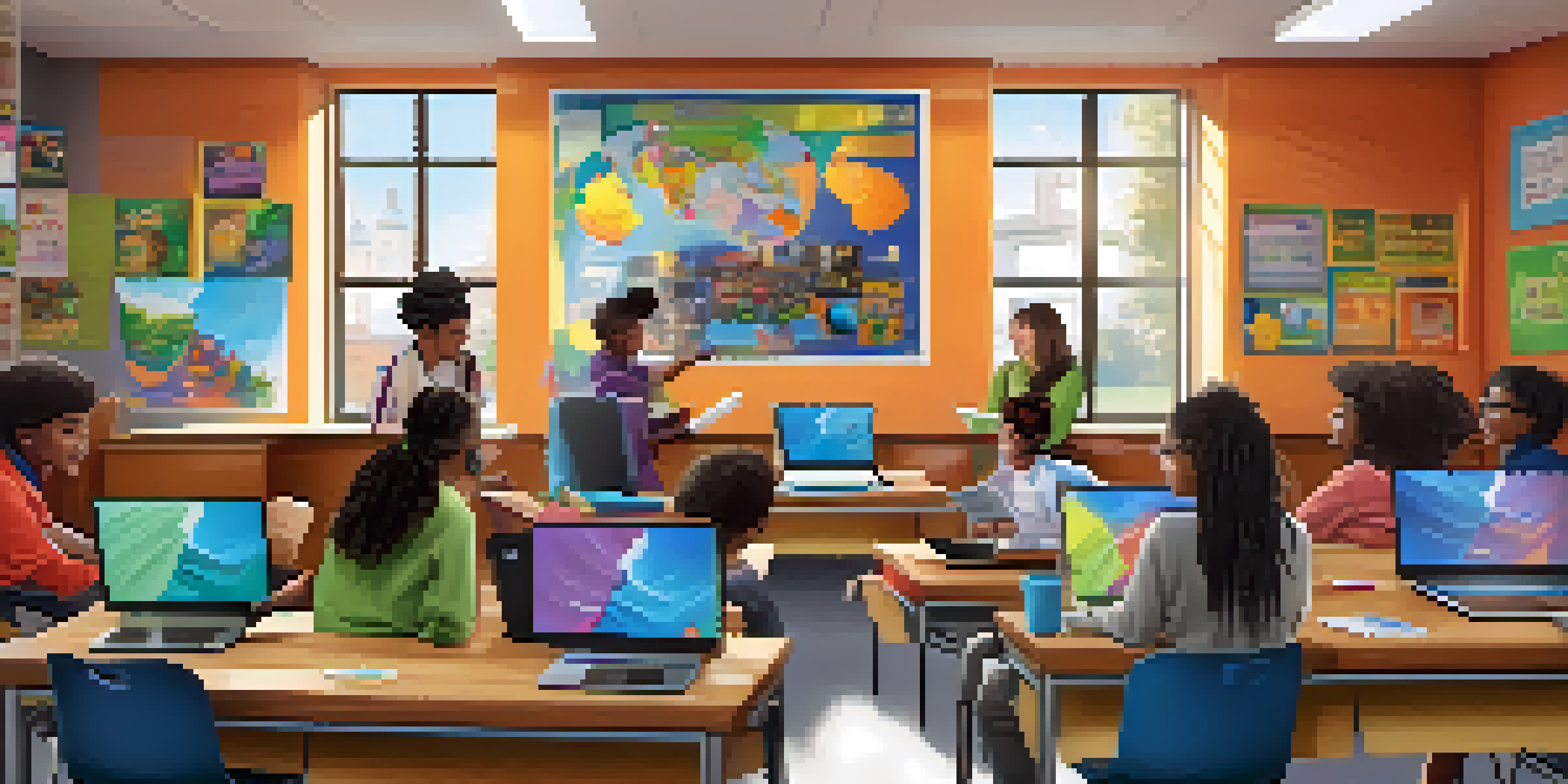Leveraging User-Generated Content for Transmedia Learning

Understanding Transmedia Learning in Today's Digital Age
Transmedia learning refers to the way knowledge is shared across multiple platforms, allowing learners to engage in various formats. In today's digital landscape, this approach is increasingly relevant as it caters to diverse learning preferences. Imagine a student who can learn about historical events through videos, podcasts, social media discussions, and interactive games—all interconnected. This multi-faceted experience not only enriches understanding but also keeps learners invested and involved.
What is User-Generated Content (UGC) and Its Importance?
User-generated content, or UGC, is any form of content created and shared by users rather than brands or organizations. It includes everything from social media posts to blog articles, and even videos. This type of content is crucial in education because it allows learners to contribute their perspectives, fostering a sense of community and collaboration. When learners see their own contributions valued, it encourages deeper engagement and investment in the learning process.
Power of Transmedia Learning
Transmedia learning enhances engagement by sharing knowledge across various platforms, catering to diverse learning styles.
The Benefits of Integrating UGC in Transmedia Learning
Integrating UGC into transmedia learning offers numerous benefits, including increased motivation and relevance. When learners create content, they take ownership of their learning, leading to a more personalized experience. For example, a student might create a video explaining a complex scientific concept, which not only reinforces their own understanding but can also help peers grasp the topic more easily. This peer-to-peer teaching enhances the overall learning experience.
Creating a Framework for UGC in Transmedia Learning
To effectively leverage UGC, it's essential to create a structured framework that guides learners in their contributions. This could involve providing clear guidelines on what types of content are acceptable and how they should be shared. For instance, a classroom project could encourage students to create blogs or social media posts about their research, ensuring consistency and quality. A well-defined framework not only facilitates creativity but also maintains a level of professionalism.
Value of User-Generated Content
User-generated content fosters community and collaboration, encouraging learners to invest more deeply in their educational experiences.
Fostering an Inclusive Environment for UGC
An inclusive environment is key to encouraging diverse contributions from all learners. This means acknowledging different backgrounds, perspectives, and skill levels when it comes to creating content. For example, some students may feel more comfortable sharing their thoughts through artwork rather than written essays. By embracing various forms of expression, educators can ensure that all voices are heard, ultimately enriching the learning experience for everyone involved.
Tools and Platforms to Promote UGC in Learning
There are numerous tools and platforms available to facilitate UGC in transmedia learning. Social media, blogging platforms, and video-sharing sites are just a few examples where learners can share their insights. Additionally, collaborative tools like Google Docs allow for real-time editing and feedback, encouraging teamwork. By leveraging these tools, educators can create a vibrant ecosystem where learners easily connect and share their ideas.
Framework for Effective UGC
Creating a structured framework for user-generated content helps maintain quality and encourages creativity among learners.
Measuring the Impact of UGC in Learning Outcomes
Measuring the impact of UGC on learning outcomes can be challenging, but there are effective strategies to assess its success. Educators can use surveys and feedback forms to gauge student engagement and satisfaction. Additionally, tracking participation rates and the quality of user-generated content can provide valuable insights. For instance, if students are actively creating and sharing content, it’s a strong indicator of the positive effects of UGC on their learning process.
Future Trends in UGC and Transmedia Learning
As technology continues to evolve, the potential for UGC in transmedia learning will expand even further. Virtual reality and augmented reality offer exciting opportunities for immersive learning experiences where users can create and share content in innovative ways. Imagine a history lesson where students can create a virtual museum exhibit based on their research. The future is bright for combining UGC and transmedia learning, paving the way for more engaging and meaningful educational experiences.